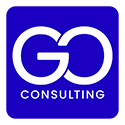If your Google Ads campaigns aren’t driving the growth you expect, you’re not alone. Many SaaS companies struggle to optimize their ad spend effectively. Here’s how to change that.
Why Traditional Ad Tracking Falls Short
Most businesses still focus on clicks and basic conversions, missing the deeper insights that could unlock significant ROI. This inefficient approach often leads to wasted ad spend and lower returns. Many Google Ads accounts are left on auto-run, with outdated structures that fail to adapt to changing performance data. Regularly rebuilding and restructuring your campaigns based on event-based conversion data is essential to staying competitive and maximizing your ad spend.
What Is Event-Based Conversion Tracking?
Event-based conversions track specific user actions beyond simple clicks and purchases, such as trial sign-ups, feature engagement, or even actions taken within your product. These actions often represent crucial steps in the customer lifecycle that data has shown to be strong indicators of future conversions. By understanding which events drive conversions, you can optimize your ads more intelligently and with greater precision.

The Power of Automated Bidding with Event Data
Google’s automated bidding algorithms thrive on precise event-based conversion data. By feeding these algorithms the right data, you can optimize bids in real-time, ensuring your ads reach users most likely to convert. Google’s algorithm doesn’t just adjust bids—it actively seeks out new prospects similar to those already converting. This means your ads are shown to high-potential audiences, maximizing ad performance and return on ad spend (ROAS).
Tailoring Google Ads for Success
Many companies face unique challenges like longer sales cycles and higher customer value. That’s why a different approach is needed:
- Funnel Optimization: Use event tracking to fine-tune each stage of the customer journey, ensuring your ads align with key touchpoints that drive conversions.
- Customer Lifetime Value (CLV) Focus: Prioritize CLV in your ad strategy to revolutionize your spending by focusing on long-term profitability rather than short-term gains.
- Track Opportunity Cost: It’s critical to track metrics like opportunity cost. Once you have a predictable opportunity cost, you can align it with your company goals and use it to scale your budget effectively. By knowing exactly how much it costs to generate a high-value opportunity, you can back into your broader business goals and ensure your ad spend supports sustainable growth.
The CEO’s Role in Ad Optimization
Strategic CEO involvement can have a major impact on digital marketing success. Monitoring key metrics like Customer Acquisition Cost (CAC) and Return on Ad Spend (ROAS) ensures that your ad campaigns align with long-term business goals.
Actionable Steps for Immediate Impact
- Audit Your Campaigns: Review your current Google Ads setup for areas of improvement.
- Implement Event Tracking: Begin tracking the most critical actions for your business and pass these through to Google Ads.
- Prioritize Testing & Optimization: Regularly test and refine your strategies to find what works best.
Final Thoughts
If your Google Ads aren’t delivering the ROI you need, it’s time for a review. Contact us for a complimentary Google Ads audit, and let’s turn your campaigns into a growth engine for your business.






